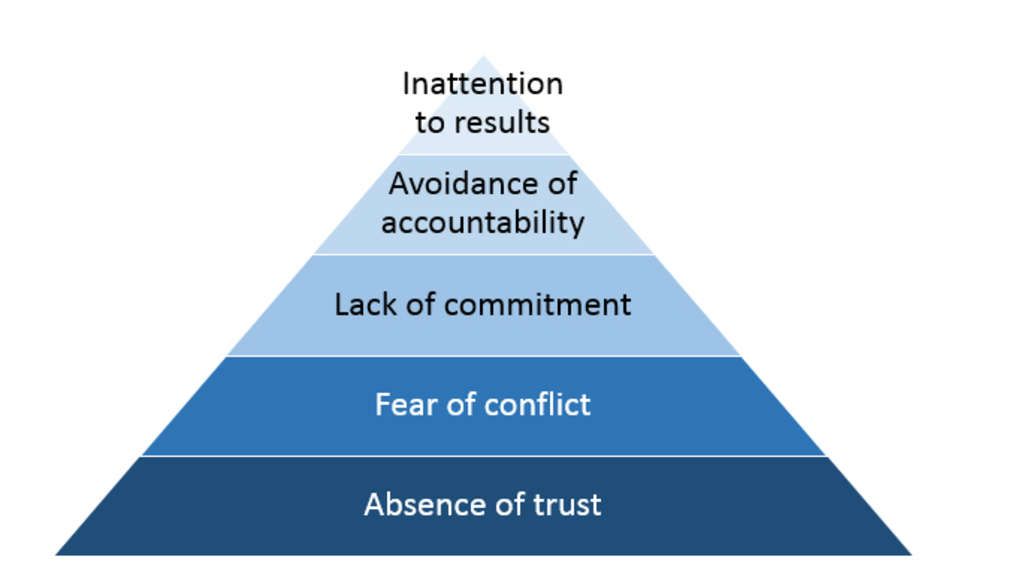Have you Taken Your Team’s Temperature Lately?
Effective evaluation to ensure a well-functioning team in the workplace.

Hospitality is typically founded on teams of individuals working together, not only for the high performance of their function but also for creating a positive experience for guests. We can see that F&B, front desk and housekeeping teams all have an effect on guests' impressions of their hotel stay. Similarly, back office teams such as marketing, finance and revenue management contribute to the performance of the organization through smooth operations and raising brand awareness. Research has identified that the more effective the team is, the greater its ultimate performance. Although good team functioning is often assumed, it can be difficult to take a step back and reflect on how a team is actually performing as an entity.
Taking time out to understand the dynamics of how your team is functioning, how team members are reacting to each other and to focus on outcomes and team goals - these are all important steps for identifying dysfunctions and, more importantly, collectively thinking about how to address them. In this article, I will explore some of the dysfunctions that can cause a team to underperform and suggest a questionnaire for taking your team's temperature.
Team Dysfunction
There are two ways to think of effective teams: (1) they perform the tasks they are required to undertake, known as task reflexivity, and (2) how the team works together, known as social reflexivity, which focuses on psychological (social and emotional) aspects. Typically, it is easier for team leaders to focus on the former because task achievement is easier to measure and avoids the sometimes thorny issues of managing the individual emotions of team members. Yet, it is often the latter that results in team dysfunctions. After all, task effectiveness can be resolved by upskilling and improving capabilities and/or providing additional resources that a team might need to complete tasks.
Former consultant, Patrick Lencioni [1], identified five dysfunctions of a team, as shown in Figure 1, which should be avoided and certainly addressed if you identify them:
- Absence of trust - Without this, team members won't open themselves up to ask for help from each other, because being seen as vulnerable is often considered a negative thing. Trust is vital to build strong relationships.
- Fear of conflict - Conflict can be good if it is managed in a constructive way, such as disagreements where different views are heard; this can lead to productive ideas and new ways of working. Where conflict is avoided at any cost due to fear of negative consequences, the result may be a lack of innovation and creativity, as well as a sense of unease or edginess between team members.
- A lack of commitment - This can result in work not being done or not being delivered to sufficient quality, or not sticking to decisions that have been made.
- Avoidance of accountability - Similar to (3), without individual and team accountability work may not be delivered. In teams where there is fear of conflict, it is likely that team members won't hold each other accountable either.
- Inattention to results - This occurs when individual goals are seen as more important than team goals, affecting the team's collective success.
How can you identify dysfunction? Of course, if you know your team well, you can often sense undercurrents. But sensing them and confirming them are two different things. To take your team's temperature, I suggest using the Team Reflexivity questionnaire formulated by Michael A. West [2].
Taking Your Team's Temperature
West's Team Reflexivity questionnaire is a simple tool that can be applied to any team (including virtual or dispersed). Individuals can evaluate themselves as well as the team. I have used this questionnaire in my teaching, working with groups of students at the Ecole hotelière de Lausanne to help them become high performing teams when carrying out projects. I have also used this questionnaire with teams working in various units of large hotel chains in both front desk and back office functions. It's worth noting that subtle shifts in the team, such as a new person joining or someone's promotion can lead to dysfunctional behaviors arising.
How to use the questionnaire: First get all team members to complete the questions by giving each question a score of 1-7, with 1 being very inaccurate and 7 being very accurate. Add all team members' scores together but separately for the task section and the social section so you have two total scores, then divide each by the number of team members to get an average. High scores are 42-56, average scores are 34-41, low scores are 0-33.
Questionnaire
Task reflexivity:
- The team often reviews its objectives.
- We regularly discuss whether the team is working together effectively.
- The methods used by the team to get the job done are often discussed.
- In this team we modify our objectives in the light of changing circumstances.
- Team strategies are often changed.
- How well we communicate information is often discussed.
- The team often reviews its approach to getting the job done.
- The way decisions are made in this team is often reviewed.
Social reflexivity:
- Team members provide each other with support in difficult times.
- When things at work are stressful the team is very supportive.
- Conflict does not linger in this team.
- People in this team often teach each other new skills.
- When things at work are stressful, we pull together as a team.
- Team members are always friendly.
- Conflicts are constructively dealt with in this team.
- People in this team are quick to resolve arguments.
Once the results are put together, this provides an excellent opportunity to start a discussion about how the team is performing. High scores mean that the team is performing and working well together. Low scores need addressing. It can be interesting to look at the scores for individual questions to get a more precise idea of what is going on and spot any disagreements. The trouble with averages is that they can disguise the beginning of discontentment. Looking at the results for individual questions, you may find there are outliers. Negative outliers resulting in lower scores could indicate the beginning of trouble.
Resolution
The best way to resolve any identified dysfunctions in your team is to discuss what is going on as a group. Identifying the underlying root causes of the conflict should be the first step and this is often best done by speaking to everyone individually first, then creating a safe environment where team members can speak openly without fear of repercussions. Taking the team out for an away day to a neutral setting can help, it also means shutting off from the everyday routine and environment.
Sharing the results of the questionnaire is an excellent way to get the conversation going: What do individuals think? Can they share examples? Of course, personal attacks or the conversation descending in acrimony is best avoided. Creating some 'rules of engagement' about not interrupting the speaker, how long a speaker has the floor and ensuring that the issues are not about people's personalities but rather specific incidents. Ultimately, the conversation needs to focus on why things happened and then lead onto a shared resolution. Anytime an individual speaks to point out an issue, they should also contribute a positive idea of how to better work together. This enables the team to focus on the future state of becoming a high-performance team rather than indulging in a blame game.
Conclusion: Regular Check Ups are the Best Way Forward
In conclusion, implementing team evaluations can be very helpful to building a hig performance team. But as with your own health and well-being, having a regular checkup is important. You can monitor from one check-up to the next what progress is being made across tasks and social reflections, and even regarding individual questions to get more specific insights. Thanks to this approach, I have seen teams move from a mediocre performance where managers began to despair that they might have to replace some staff members, to becoming teams with demonstrable impact. I would argue that a regular check-up gives team members a feeling that they are in control. As a manager or team-leader, you do need to create the right conditions for effectiveness - these include ensuring that solutions are implemented and monitored, that individuals can see that their voices are heard and valued. For hospitality teams and managers, the results can be astounding.
References [1] Patrick Lencioni, The Five Dysfunctions of a Team, Fable: USA, 2002. [2] Michael A. West, Effective Teamwork, BPS Blackwell: Oxford, UK, John Wiley & Sons, Ltd, 2012.
EHL Hospitality Business School
Communications Department
+41 21 785 1354
EHL

